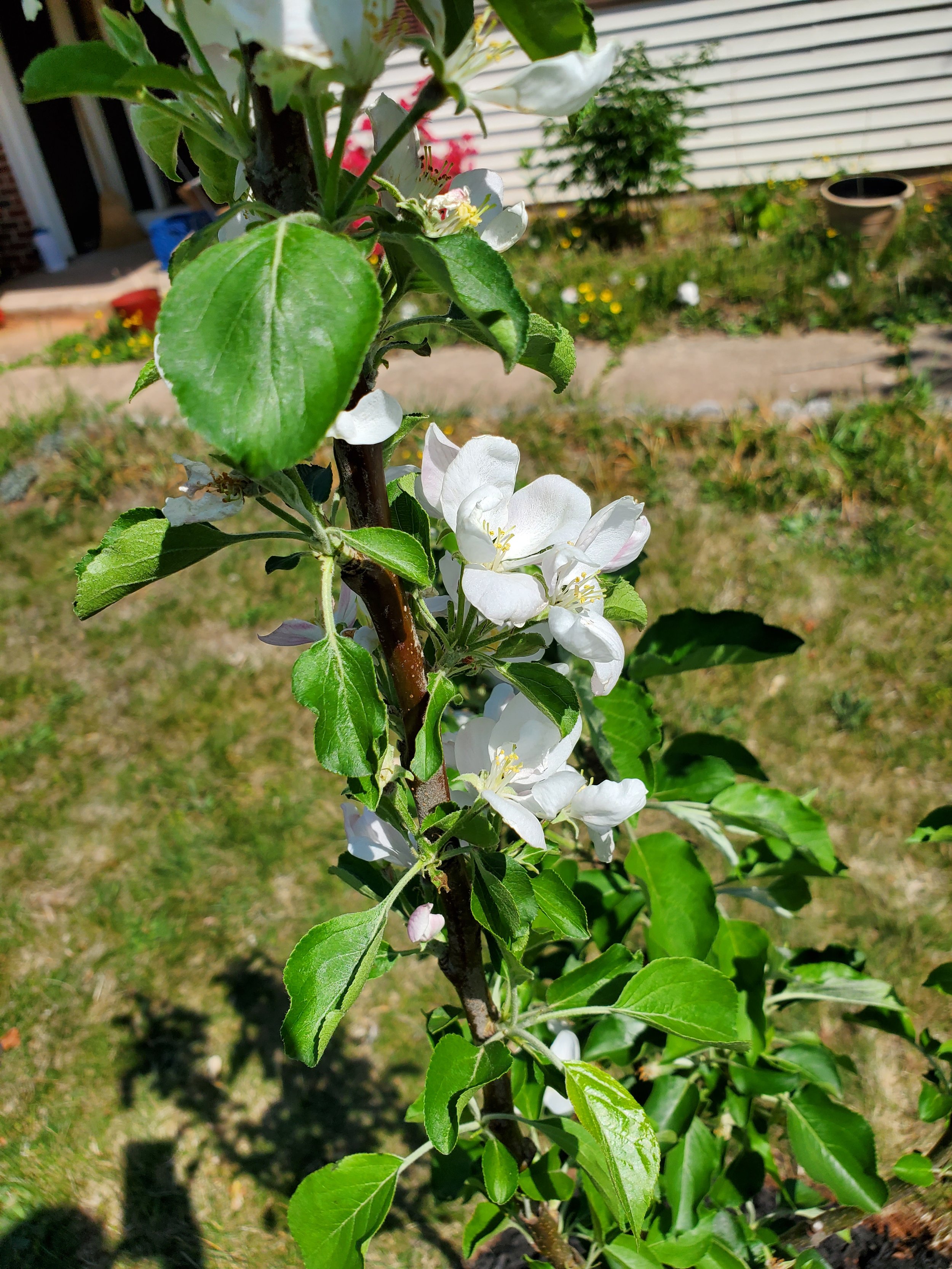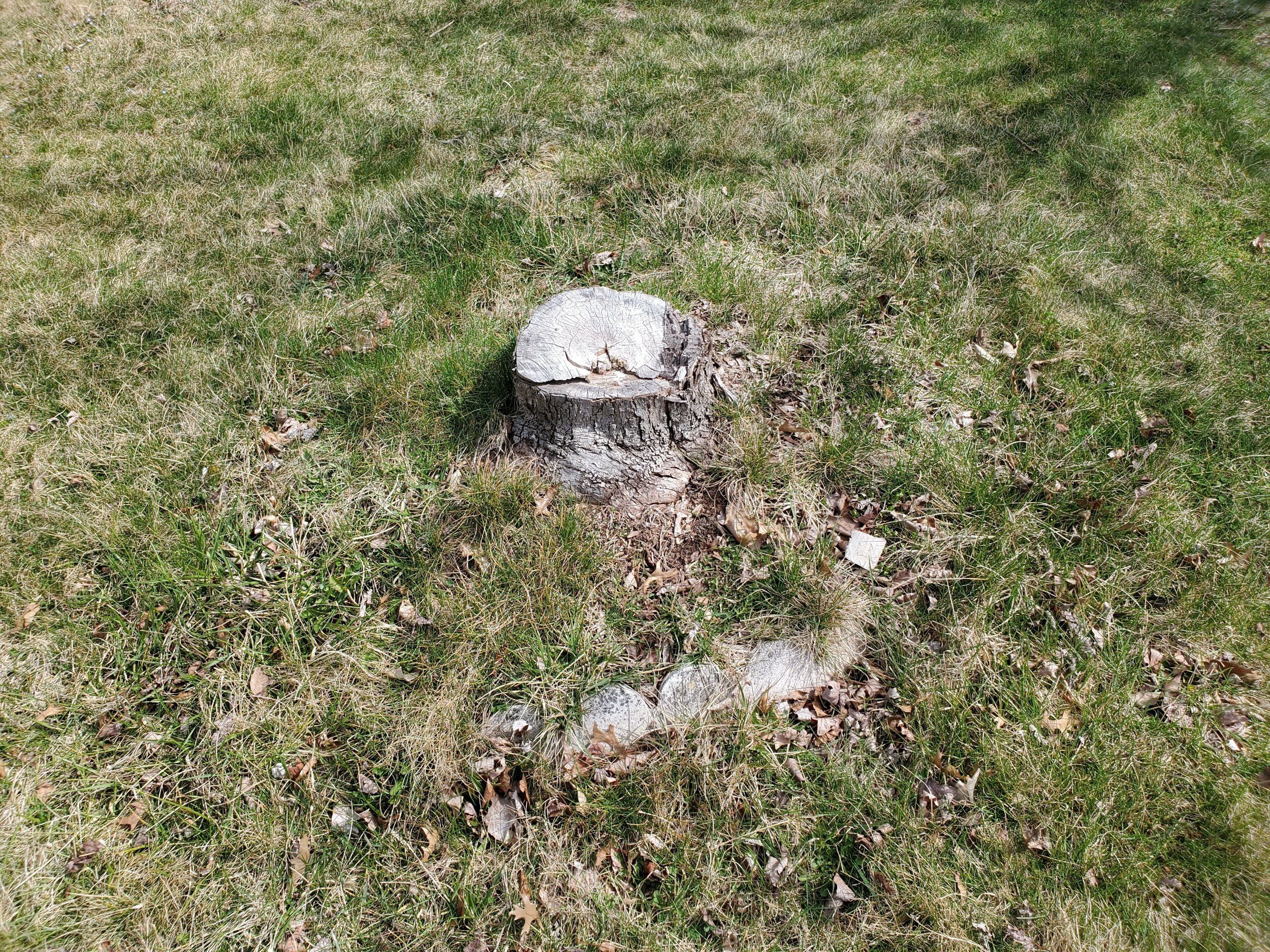It’s the waxing half moon again, and so I’ve gone to Freyja and been shown another journey path to share with you all. And as before, this is based on my experience, and I’m offering it to the community in case it’s helpful or resonates with some of you. If you’re used to doing journeys from a script, great! Otherwise feel free to have some one read it to you, or record yourself reading it. Edit the intro and expand the outro if you need to, but please leave the middle intact, and don’t share the recording without telling them where to find my original post!
I recommend lighting devotional candles and/or making small offerings (perhaps a libation) before you begin, for both Freyja and Idunna. Prepare yourself however you normally would, yo do work at an altar. For my part, that usually means wearing one of my devotional hair ribbons and perhaps donning magical jewelry, and acquiring something to go over my head while I journey.
Falcon Flight: To Idunna’s Apple Grove
Begin in stillness, and quiet, and darkness. Find your center, and align yourself with earth and sky. As you stare at the darkness behind your eyes, feel and see as mist swirls up from the ground, obscuring everything around you. After a moment, it begins to part, leaving you standing in a flowery meadow.
When you arrive in the meadow, take a moment to observe around you, turning until you see a path. At the entrance to the path are two shrubs, and as you move on that direction, you see trees as well. Shrubs give way to trees and undergrowth on either side of the path, getting taller and denser as you move onward, until they join overhead into an arch, forming a tunnel of trees that slopes downward, getting denser and darker.
Eventually, you notice that the path has become flat, and then it begins to rise. Now the trees are thinning again, branches giving way to brightness, and as the trees again give way to shrubs, you see a gate in front of a wide plain and beyond it, the great world tree. If you have any guides or guardians you wish to accompany you, ones who can join you in flight, call to them now, before you step through the gate and make your way towards the tree.
As you approach the World Tree, circle around it clockwise, until you see an opening beneath one of the great roots. Duck under this root and enter the tunnel beneath. There is hard dirt packed beneath your feet, and the entire tunnel seems to have been hewn from that same clay-rich dirt and sandstone. Not as many feet come this way — the floor is still rough in places, so watch your step as you continue forward. There are torches set into sconces in the rough hewn walls, and their light looks like fire but you feel no heat as we continue past, and you smell no smoke or pitch.
The tunnel curves gently and then begins to rise in a gradual incline, ending in a doorway, two huge stones on either side and capped with a third. Touch one gently as you step out into the fresh air — these are worn by the elements and smooth to the touch. If you look back to the entrance, you will notice that on this side, the tunnel leads into what looks like a large burial mound, standing alone in a large clearing, though the forest is slowly encroaching from all sides.
Smell the air — the pine sap scent is strong, and your nose can tell there is moving water somewhere nearby, even if your ears cannot yet hear it. Now you should continue, following a clear trail deeper into the forest. Your footfalls are muffled by pine needles, and the air seems still. The scent and after a while the sound of water is to your left as you walk, and after a short time, you arrive at a fork, with three paths to choose from.
One path curves to the left, and you can just make out a bridge over a creek in the distance. The one to the right seems to vanish into the trees. Continue down the middle path, which leads straight ahead. After a while, the trees seem to thin a bit, and the underbrush grows less tangled. There is a little smoke in the sky, above the rise of the hill, as though it comes from a hearth-fire, and you follow the path towards it.
As the path reaches the edge of the forest, and the pine needles give way to a large open field, your eyes are drawn to the great hall. It is large, and you know at once to whom it belongs. This is Freyja’s Hall, Sessrumnir, and you are in Folkvangr. Approach the door, and when the guard calls out his challenge, announce yourself and your purpose. He will stand aside and let you in.
Inside, you see no one but Freyja. Approach her, and give her the offering you brought for her. She will give you a golden cloak in return, a smaller version of her great cloak, and she will lead you outside. Experience the thrill of being transformed into a bird!
As a falcon, follow your Lady, circling ever higher until your sharp eyes spot a cottage and a circle of trees. As Freyja in her falcon form banks sharply to begin her descent, follow closely and land in a low branch in a tree across from the front door of the cottage. Leap down when Freyja instructs you to, and marvel as you land on your normal feet again. Follow her into Idunna’s cottage, and when you are inside, give Idunna the offering you have brought for her. In return, she will hand you an apple and may instruct you to peel or slice it. Do as she says, and then offer it for her inspection. Listen as she explains your omen.
When she gets up, follow her and Freyja outside. Notice how the air feels and smells – you’ve been led to a small ring of apple trees, which bear flowers, leaves, and fruit at all stages of growth. Listen as Idunna sings to the trees: “Apples, apples, grow on my trees… Apple blossoms, feed my bees…”
Only she can tell the types of apples apart – some for the gods that they never wither, some for the elves to use to heal, others for humans to change their luck. If you have a question for Idunna, ask it now, and listen carefully for the answer.
Thank her when she is finished speaking, and then turn to Freyja. If you have any questions for Freyja, ask them now, and listen carefully for the answer.
When she is finished talking, she will change both of you back to falcons for the flight back to Folkvangr. Delight in the sensations of it! Earlier you flew to arrive swiftly – now, fly for the joy of it! When you are ready to change back to your human shape, land on the roof of Sesrumnir, and wait for your Lady to make the change. Then you can slide down, and land on the soft grass.
When you are finished with your time in that other place, go back the way you came: through the forest, to the mound, through the mound-tunnel and out from under the root, across the plain, and back to the gate, through the tunnel of trees, and back to the meadow. Then the mist will swirl up again, and take you back to your body.









